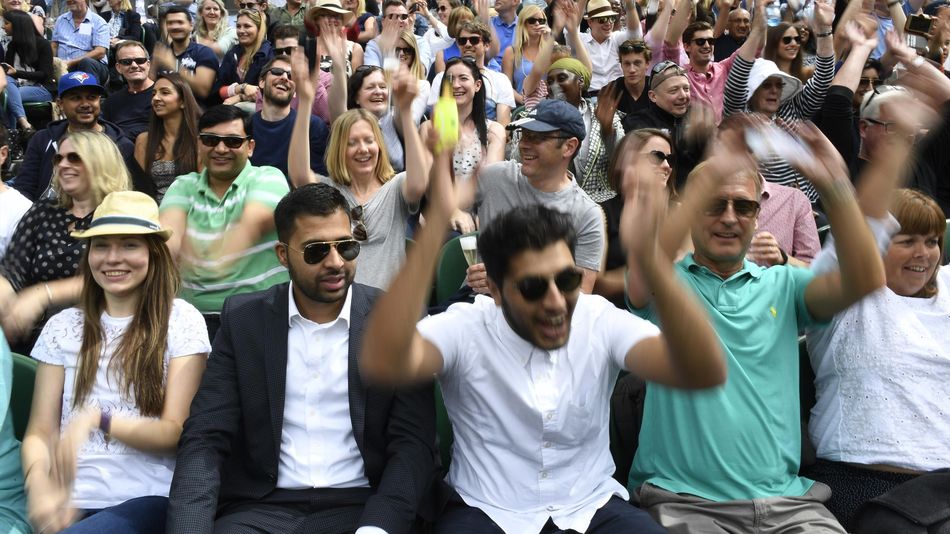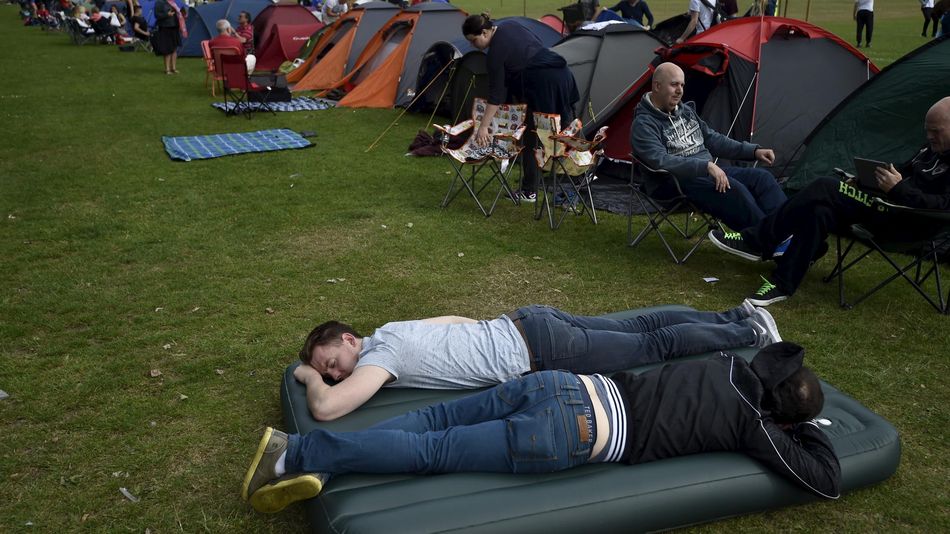Tumaini Carayol lauds the success of ‘People’s Sunday’ at Wimbledon, but fears tradition will veto any hopes of an annual repeat.
As play began on the first active middle Sunday in 12 years, the Wimbledon grounds presented a stark contrast to the scene a day earlier.
For the first time in 12 years, the fans that circled the perimeter of the grounds were not yawning as they picked blades of grass from their scalps; only fans already armed with tickets were permitted to enter. As they lined up, the fans were required to provide identification and credit cards to enter; Wimbledon was declaring war on the ticket touts. And thanks to the security and logistical nightmare of trying to call thousands of workers to work on a day that wasn’t on their schedule two days ago, the venue that usually tightly squeezes 40,000 fans through its gates was only 22,000 strong.
The main function of Wimbledon’s middle Sunday has always been to provide a free day of sanity and calm for the neighbourhood surrounding the All England Tennis Club between the fractured traffic and hoards of people descending on the club every year.
It has come to signify the same for everyone involved. For players, officials, staff and even the insentient grass, the Sunday of rest has always been well received. After a week of navigating the tunnel system underneath the courts, keeping to the player-specific areas and occasionally being forced to face the hordes of bodies, there is no feeling for the players quite like the opportunity to stretch their legs and stroll unaccosted around the empty grounds.

General view as spectators perform a mexican wave on centre court before the start of play - Reuters
But what about the fans?
For a tournament that seems to pride itself on catering for their needs, the fans are so often an afterthought. There are already fundamental problems with the way The Championships connects with its fans. The queue is deemed one of the centrepieces of Wimbledon tradition, yet today it mainly stands as the punchline to any argument about the tournament’s continued fear and avoidance of change.
While the queue remains a great opportunity to capture a grounds pass on the day, no amount of pictures of fans with their thumbs up and annual photo ops from Judy Murray and Toni Nadal handing out coffee can distract from the fact that, in a large part thanks to the popularity of the former’s son, the queue is becoming obsolete and overrun with too many fans. The optics of the queue has always seemed to define the reality of Wimbledon: as the wealthy saunter through the gates off the back of their connections and money, the peasantry must sleep rough and sacrifice an entire day for the privilege to sit alongside them.”

Tennis fans relax after setting up their tents in the ticket queue at Wimbledon - Reuters
Meanwhile, the empty Sunday itself presents such a drastic departure from the other events because the weekend is usually the central opportunity for many people to embark on a tennis tournament. Attending a tennis event before the final rounds, unlike a football game or any singular sporting match, is a full-day experience. The working day is not so easily brushed aside in favour of waltzing around tennis matches for nine hours, so every year a missed opportunity.
In these ways and many others, that’s why this year’s middle Sunday presented the very best of Wimbledon. As cringeworthy as the phrase “People’s Sunday” rings out, this was clearly a day for the people who love tennis. Not only were the fans unexpectedly treated to a new day of tennis, but it was also in circumstances that were entirely unique from a normal day of play.
The late notice of the decision to call an extra day brushed aside the presence of the Brits who arrive at Wimbledon and Queen’s only to be seen. Meanwhile, the small number of fans allowed those in attendance to wander the entire grounds, calmly watching practices and poking their heads in and out of matches in a manner that is simply impossible in the normal traffic-filled corridors and queues for show courts during the first week.
Under normal circumstances, the match between two of the most prominent and talented female players, Svetlana Kuznetsova and Sloane Stephens, would not have been played on Court One. And if it had made the cut, it’s more likely that some members of the crowd would have immediately vacated the court whilst others spent the entire duration of the match mistaking Stephens for her countrywoman Serena Williams.
Instead, the people who fought for their tickets were engaged, knowledgeable and created an atmosphere that facilitated one of the matches of the tournament. Throughout the match, Stephens was cheered with an intensity that has never been seen outside of her home country. After Kuznetsova finally triumphed 6-7 6-2 8-6, the pair departed to a standing ovation.
From the perspective of any fan, in a perfect world this year’s middle Sunday would be bottled and replicated on an annual basis. It was a roaring success to the point that even the number of attendees seemed to be the perfect figure that allowed fans to experience Wimbledon with the simultaneous calm and energy that it projects from the television but doesn’t always capture in perfect.
But Wimbledon, like so many other sporting events, isn’t about the fans; it’s about the players, the tournament, the royal box attendees and the residents surrounding it. That’s a tradition that will never change.
Source
.
Source
.

No comments:
Post a Comment